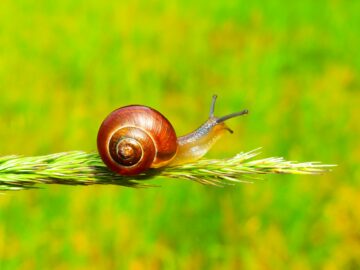Science is an ever-evolving field that helps us better understand the world that we live in. Discoveries are being made every day, giving us more insight into the changes and occurrences we experience. This makes science an interesting subject to teach your children.
Whether you are beginning to explore the wonders of science with your child or you have been a scientific aficionado all your life and want to pass that on, here are some fun facts about science that you would not want to miss:
Interesting Science Facts
Photo by Nigel Msipa
- There is such a thing as overhydration (drinking too much water), which can also be deadly.
- After the rain, filamentous bacteria in the soil called actinomycetes cause an earthy smell (petrichor).
- Sound waves can generate heat.
- The only thing that can scratch a diamond is another diamond.
- Most liquid molecules compress when they freeze, except for water, which expands.
- Many animals burrow and hibernate under the snow because it is an insulator and can warm you up.
- The acid in the human stomach can dissolve and corrode a razor blade within 24 hours of ingestion.
- The letter “J” does not appear in the periodic table.
- Transported by a V2 rocket on the 20th of February in 1947, fruit flies were the first living creatures intentionally sent to space.
- Wearing headphones may increase your chances of getting an ear infection. This is especially true when headphones are worn for more extended periods. This comes from the headphones’ effect of increasing the temperature and humidity inside your ears, making it ideal for bacterial growth, which may cause ear infections.
- In gaseous form, oxygen has no color. But in its solid and liquid form, it turns pale blue.
- The chicken is a living relative of the T-rex.
- A tree’s age is known by counting its annual rings.
- Earth’s tallest grass is commonly known as bamboo.
- A rainbow is an optical illusion.
- Astronauts cannot cry in space; instead of tears streaming down, they produce a jell-o-like blob in response to the lack of gravity.
- Sound travels faster in water than in air.
- Chameleons change their colors due to several reasons. These include blending into the current environment, regulating body temperature, or feeling specific emotional changes such as aggression or excitement.
- Stuff sent to space smells differently when they return to earth. Astronauts describe the stench as somewhat acrid or metallic, which scientists believe is caused by polycyclic aromatic hydrocarbons released into space during nuclear reactions.
- Planets such as Neptune, Uranus, and Saturn, have such extreme atmospheric pressure that carbon atoms crystallize, making rain diamonds in their atmosphere.
Photo by George Prentzas
- Fingerprints are to humans as whisker nose patterns are to lions; they are uniquely identifiable through these traits.
- Some mushrooms contain luciferins, which can make them bioluminescent at night, like fireflies.
- Swarming bees may affect local weather, many thanks to the atmospheric electricity they generate while they forage.
- The heat lightning causes in the air when it strikes breaks the bonds between atmospheric nitrogen and oxygen. It then produces ozone, which also causes a distinct smell in the atmosphere.
- Steel is considered to be more elastic than rubber.
- Just like humans, koalas also have fingerprints.
- A scientist named Dan Frost made a diamond out of peanut butter.
- A dog’s sense of smell is no match to a salmon’s, as the latter is believed to be a thousand times better.
- Contrary to seemingly popular belief, bulls are color-blind.
Photo by Felice Wolke
- Cats are “sweet blind” that is, they lack the sweetness receptors and, therefore, cannot taste anything sweet.
- Diamonds can turn into vapor, given the right temperature.
- Opiorphin, which can be found in human saliva, is a natural painkiller.
- A bird that can roar like a lion is a male ostrich.
- The production of a chemical irritant—called propanenithial-S-oxide—occurs when you slice an onion. This, in turn, causes your eyes to produce tears.
- Frogs “drink” water by absorbing it through their skin.
- Humans are taller in the morning because their spines compress by nighttime.
- Known to take down an octopus, the strongest punch out of all animals in the animal kingdom belongs to a crustacean: a mantis shrimp.
- A spider’s web has antiseptic qualities, making it a wound dressing choice in ancient times.
Facts About Scientists
- Isaac Newton is said to have two birthdays.
- A compass gifted by his father sparked Albert Einstein’s fascination for magnets and physics.
- Aristotle’s first wife, Pythias, was a Greek biologist and embryologist.
- Marie Curie and her husband Pierre did not patent their discoveries.
- Charles Darwin’s birthday, February 12, 1809, is the same as that of Abraham Lincoln.
- Thomas Edison built a chemistry lab and a printing press inside a train.
- Stephen Hawking co-authored a children’s book with his daughter, Lucy Hawking.
- Gregor Mendel worked as a gardener during his childhood.
- Nikola Tesla was born during a lightning storm.
- Leonardo da Vinci actually had no surname in the modern sense. Instead, he was simply known during his time as “Il Florentine.”
Frequently Asked Questions on Science
What is a cool science fact?
Bananas are radioactive. Known for their potassium content, bananas are indeed considered radioactive. This comes from the high potassium levels each banana contains, which can emit a small amount of radiation, making this fruity family favorite a natural radiation source.
What is a weird science fact?
Hot water, under certain conditions, can freeze faster than cold water. This is also known as the Mpemba effect.
Named after Erasto Mpemba, a student in Tanzania, the weird phenomenon has also been observed by other Scientific greats such as Aristotle and Rene Descartes. However, it was only when Mpemba wrote and published his scientific observation that such an occurrence was given a name.
What is a random science fact?
Sneezing or coughing too hard can give you a rib fracture. Spontaneous rib fractures have been recorded and occurred, especially among elderly people, those with specific medical illnesses such as bronchial asthma and chronic obstructive pulmonary disease, and those with reduced bone density.







